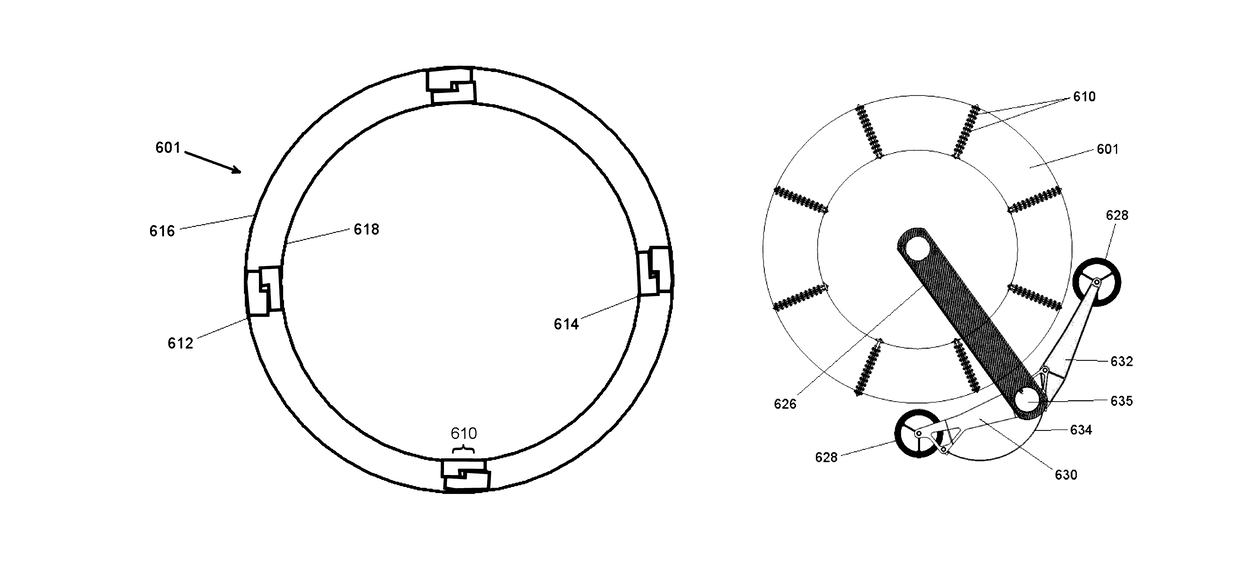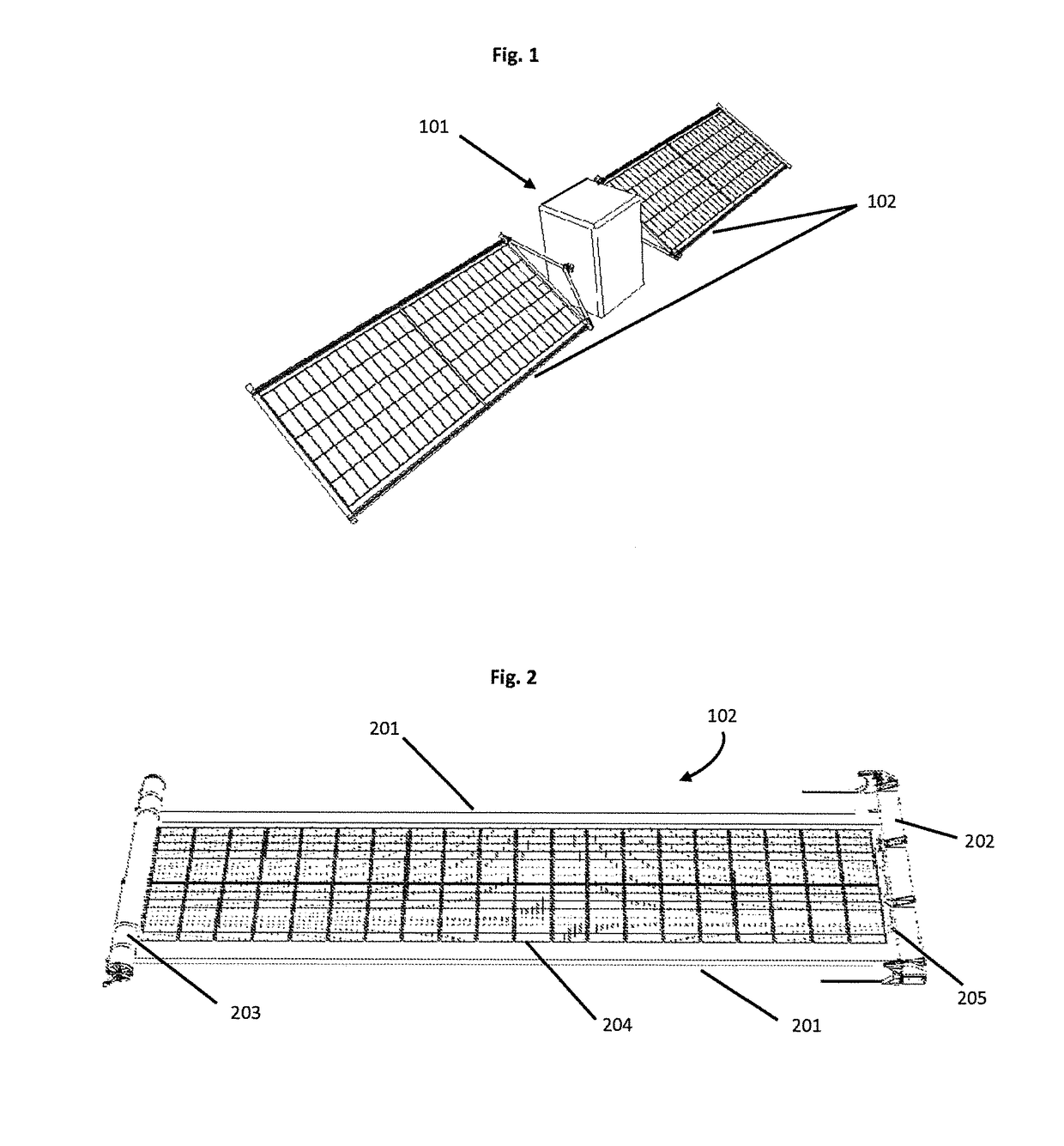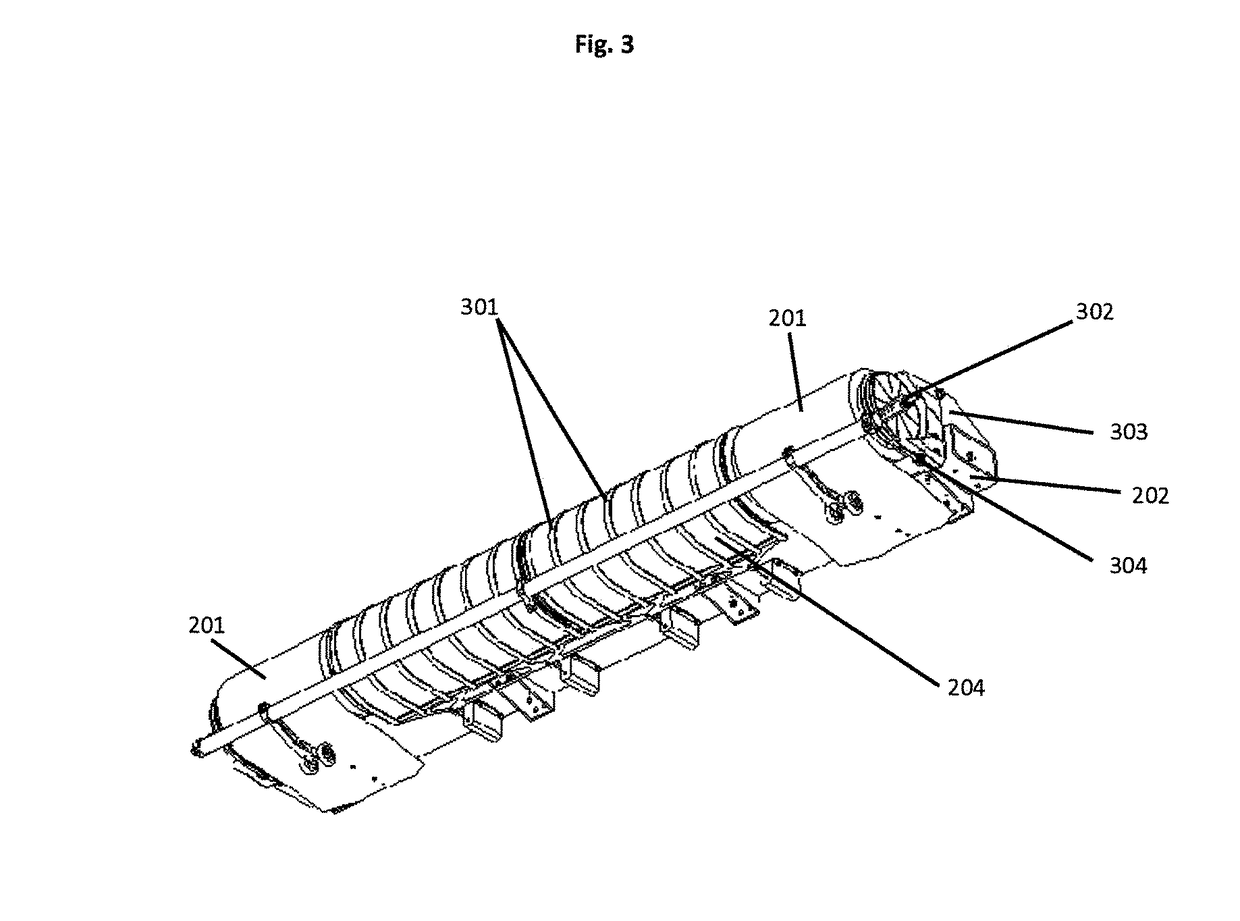Directionally controlled elastically deployable roll-out solar array
a solar array and elastic technology, applied in the field of solar arrays, can solve the problems of increasing weight and complexity, adding undesired parts, and limiting the use of flexible-blanket solar arrays, and achieve the effect of preventing shear displacemen
- Summary
- Abstract
- Description
- Claims
- Application Information
AI Technical Summary
Benefits of technology
Problems solved by technology
Method used
Image
Examples
Embodiment Construction
Glossary of Terms
[0057]Solar Array—A structure that is stowable in a small volume for shipment and launch, and that is deployable when in space to expose a large surface area of photovoltaic collectors (solar cells) to the sun, and that is mechanically and electrically attached to a spacecraft vehicle to provide power for spacecraft operations.
[0058]Flexible solar array—A solar array that includes a rollable or foldable thin flexible blanket or substrate to which the solar cells are mounted.
[0059]Rollout boom—A thin-walled metallic or composite reinforced slit-tube (open section) or closed section hollow structural member. One or more booms can be used as the primary longitudinal deployment and deployed structural member of the solar array. The thin-walled elastic nature of the booms allow them to be flattened and rolled up into an extremely compact stowage volume.
[0060]Elastic roll out boom—A roll out boom that that is constructed such that it is self-deploying elastically though i...
PUM
 Login to View More
Login to View More Abstract
Description
Claims
Application Information
 Login to View More
Login to View More - R&D
- Intellectual Property
- Life Sciences
- Materials
- Tech Scout
- Unparalleled Data Quality
- Higher Quality Content
- 60% Fewer Hallucinations
Browse by: Latest US Patents, China's latest patents, Technical Efficacy Thesaurus, Application Domain, Technology Topic, Popular Technical Reports.
© 2025 PatSnap. All rights reserved.Legal|Privacy policy|Modern Slavery Act Transparency Statement|Sitemap|About US| Contact US: help@patsnap.com



